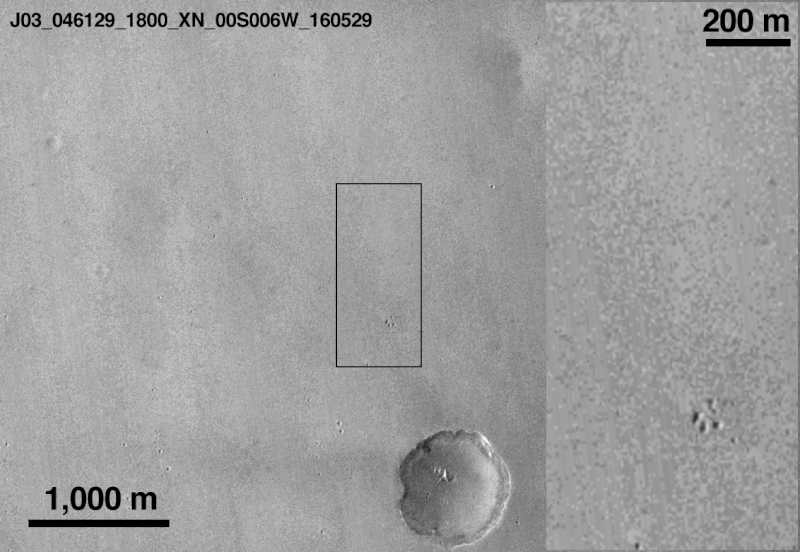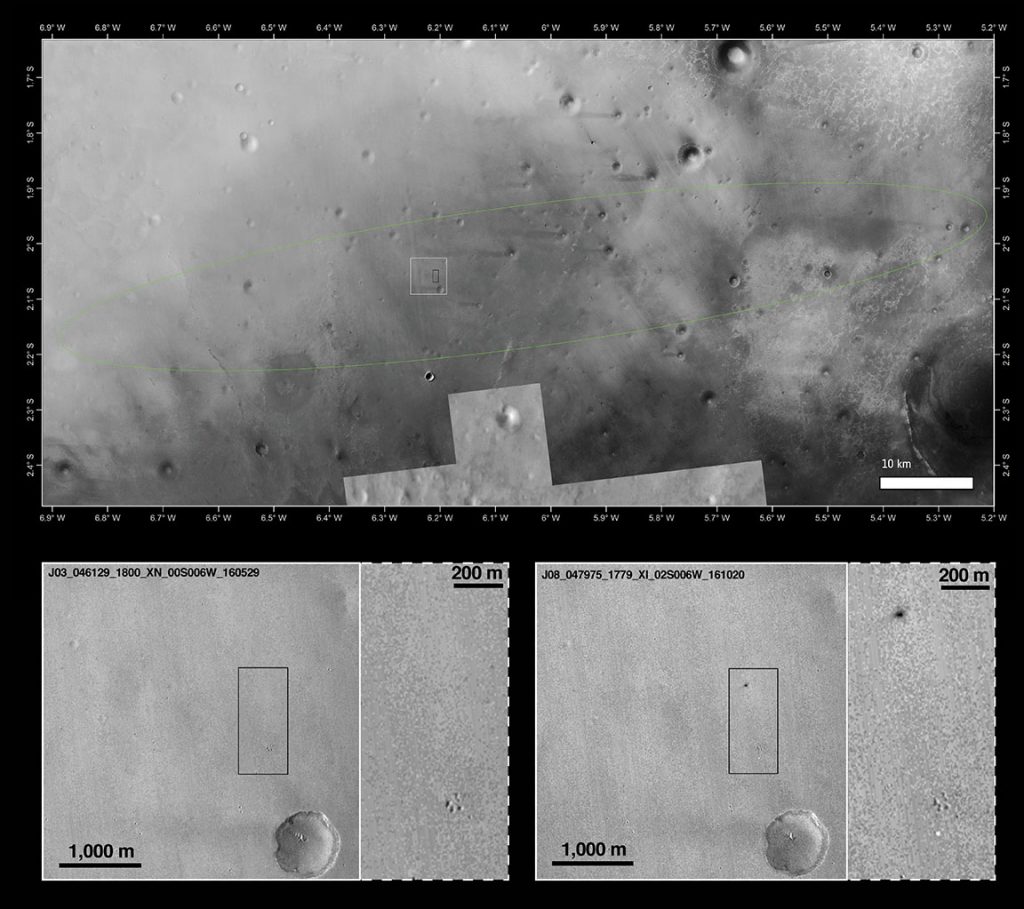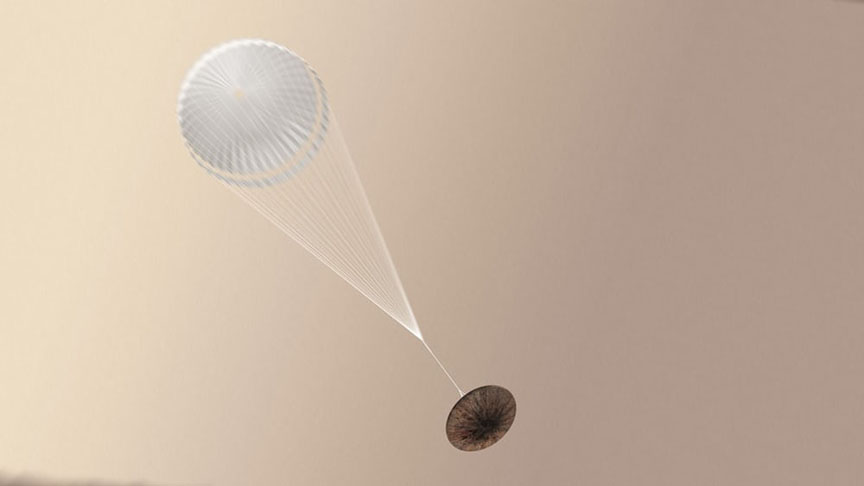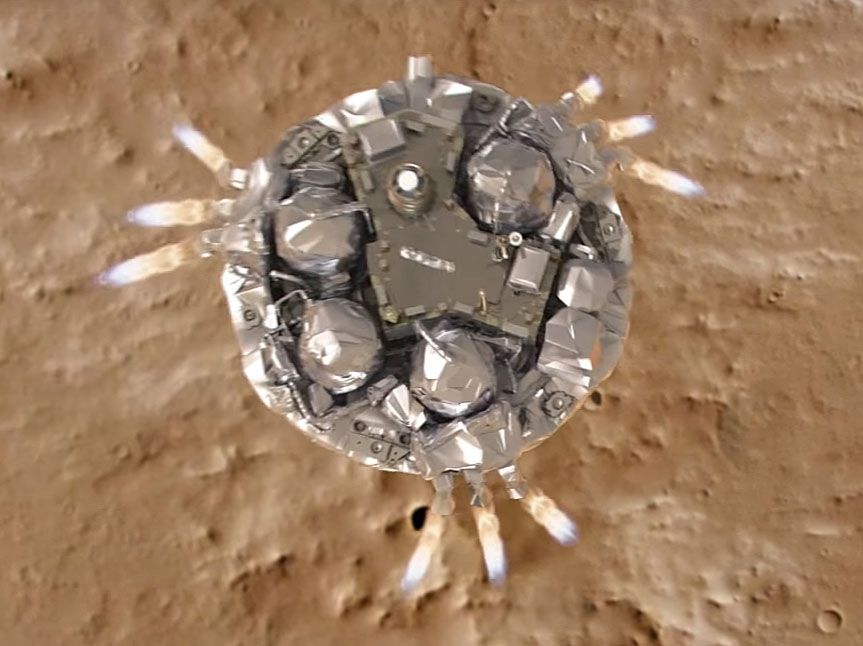
Instead of a controlled descent to the surface using its thrusters, ESA’s Schiaparelli lander hit the ground hard and may very well have exploded on impact. NASA’s Mars Reconnaissance Orbiter then-and-now photos of the landing site have identified new markings on the surface of the Red Planet that are believed connected to the ill-fated lander.
Schiaparelli entered the martian atmosphere at 10:42 a.m. EDT (14:42 GMT) on October 19 and began a 6-minute descent to the surface, but contact was lost shortly before expected touchdown seconds after the parachute and back cover were discarded. One day later, the Mars Reconnaissance Orbiter took photos of the expected touchdown site as part of a planned imaging run.

One of the features is bright and can be associated with the 39-foot-wide (12-meter) diameter parachute used in the second stage of Schiaparelli’s descent. The parachute and the associated back shield were released from Schiaparelli prior to the final phase, during which its nine thrusters should have slowed it to a standstill just above the surface.
The other new feature is a fuzzy dark patch or crater roughly 50 x 130 feet (15 x 40 meters) across and about 0.6 miles (1 km) north of the parachute. It’s believed to be the impact crater created by the Schiaparelli module following a much longer free fall than planned after the thrusters were switched off prematurely.

Mission control estimates that Schiaparelli dropped from between 1.2 and 2.5 miles (2 and 4 km) altitude, striking the Martian surface at more than 186 miles an hour (300 km/h). The dark spot is either disturbed surface material or it could also be due to the lander exploding on impact, since its thruster propellant tanks were likely still full. ESA cautions that these findings are still preliminary.

Since the module’s descent trajectory was observed from three different locations, the teams are confident that they will be able to reconstruct the chain of events with great accuracy. Exactly what happened to cause the thrusters to shut down prematurely isn’t yet known.


What a shame, is really sad this turned out like this. Does ESA have a plan B?
This was plan B. Beagle was plan A. I’m sure they’re back at work coming up with more plans. Mars isn’t an easy target.
This part of the craft was a new descent strategy test for a future mission. All this had on board per instruments beyond the nav gear were cameras. It was only expected to last 4 days. Now they can discern what went south to address fixes for the real mission in a few years, a craft with lost of instrumentation.
thank you Bob 🙂
What is it with Mars and other countries besides the U.S.? The Huygens probe (built by ESA) did a fabulous job of landing on Titan. The Russians have landed several probes on Venus, one of the most hostile environments imaginable. It seems like everyone has landed on the Moon. Yet NO ONE besides the U.S. has been able to successfully land a probe on Mars and collect useful data besides the U.S. (Not only that, the U.S. has used some very complex, diverse ways of landing – such as the bouncing airbags and the skycrane – that seemed to beg for failure due to their newness and complexity.)
It’s just weird.
I think the module was to produce some very valuable information on the presence/absence of life – as will the orbiter. I always feel for the scientists in the background, something like this that takes so long must be such a bitter thing to live with
“Since the module’s descent trajectory was observed from three different locations,”
Wait, what? That was a cruel tease. Please tell more! What/where were the “three different locations”?
from the TGO, MRO and Mars Express